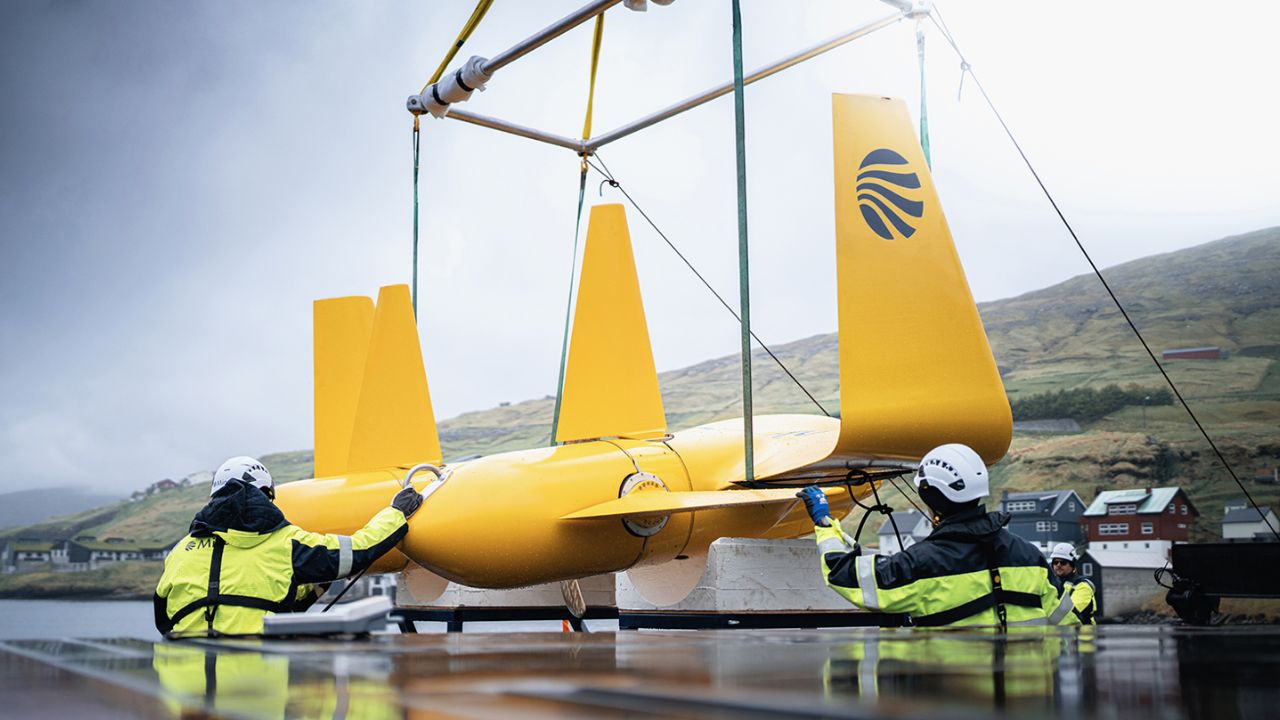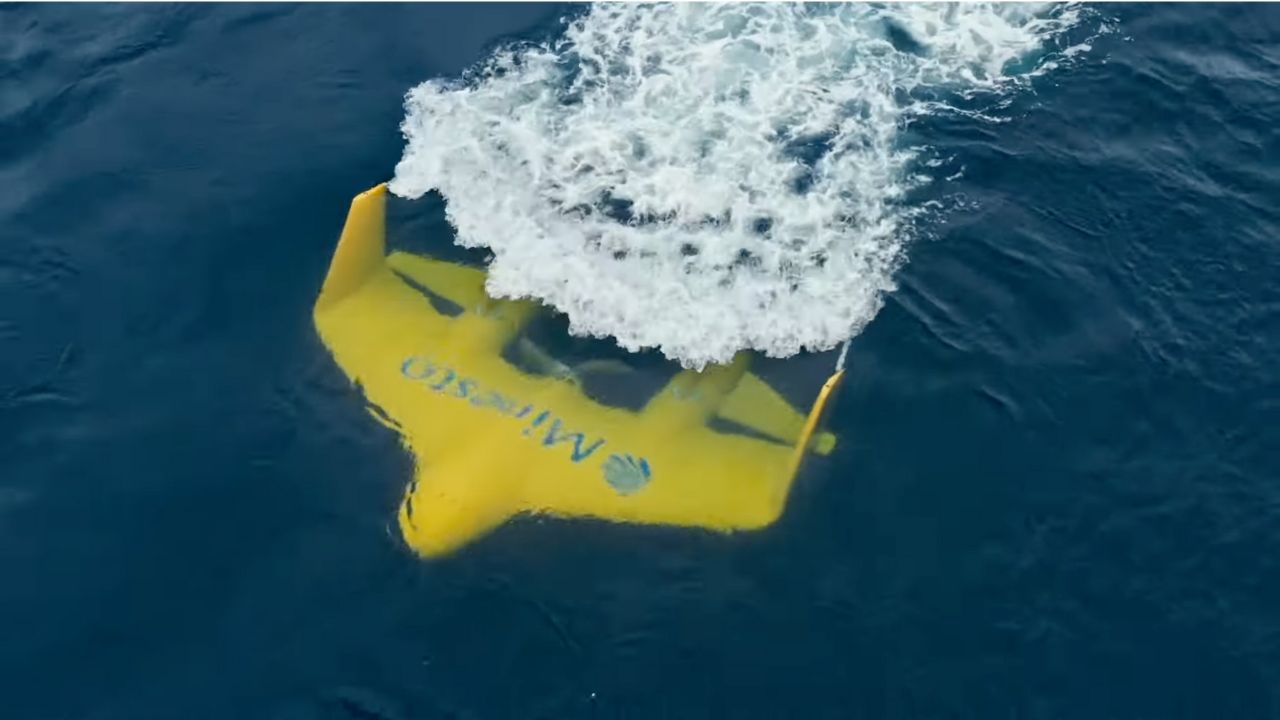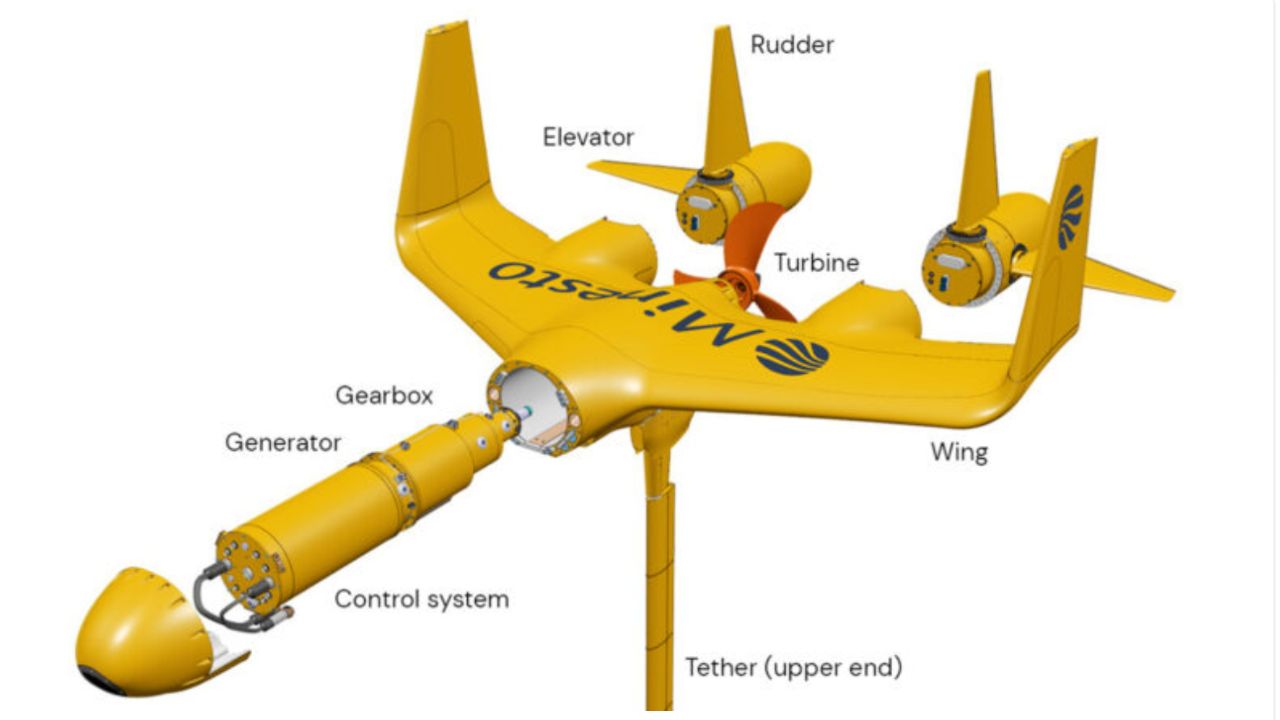The Swedish company Minesto is making waves in the renewable energy sector with its innovative Dragon 12, an underwater kite that promises to generate clean electricity.

Credit: Minesto
A kite underwater?
Imagine a kite flying through the air, tracing a figure-eight pattern as it soars. Now, picture that same motion deep under the sea. That’s the essence of the Dragon 12, Minesto’s groundbreaking machine designed to harness the power of ocean currents to generate electricity.

Credit: Minesto
MORE: DIVE INTO THE SEA WITH THIS STATE-OF-THE-ART UNDERWATER DRONE
How Dragon 12 is helping to create sustainable energy
Nestled in the North Atlantic, the Faroe Islands have embarked on an ambitious journey toward 100% clean on-shore electricity by 2030. The Dragon 12 is set to play a pivotal role in this plan, complementing existing wind, solar, and hydroelectric power sources.

Credit: Minesto
MORE: CRAZY FUTURISTIC UNDERWATER JETPACK LETS YOU FLY IN THE WATER LIKE AN AQUATIC SUPERHERO
The science behind the Dragon 12
It generates electricity by harnessing the kinetic energy of tidal currents. Here’s how it works:
Movement: The Dragon 12 is designed to fly in a figure-eight pattern underwater, similar to how a kite moves in the air. This movement accelerates the flow of water over its wings.
Energy Conversion: As the water flows over the wings, it spins a turbine attached to the kite. This turbine converts the kinetic energy of the moving water into mechanical energy.
Electricity Production: The mechanical energy from the turbine is then converted into electrical energy, producing up to 1.2 megawatts of power.
Grid Integration: The electricity generated by the Dragon 12 is transmitted via cables to an onshore station. From there, it’s integrated into the national grid system, making it available to power homes and businesses.

Credit: Minesto
MORE: A CAR-BOAT COMBO THAT CAN HIT THE ROAD OR THE WATER WITH THE SAME VEHICLE
Minesto’s vision: Affordable, clean energy for all
Dr. Martin Edlund, CEO of Minesto, envisions a world where renewable energy is sustainable and cost-effective. The Dragon 12’s lower levelized cost of electricity suggests that this vision is well within reach, potentially making green energy cheaper for consumers worldwide.

Credit: Minesto
A deep dive into Minesto’s technology
Founded as a spin-off from aerospace giant Saab, Minesto has perfected its technology since 2007. With 92 patents and a successful track record, the company’s utility-scale tidal power plant, Dragon 12, delivers electricity to the Faroe Islands’ grid.

Credit: Minesto
The future of tidal energy: prospects and challenges
While the Dragon 12’s innovative design offers many advantages, questions remain about its long-term reliability and impact on marine life. As Minesto continues to refine its technology, the answers to these questions will shape the future of tidal energy.

Credit: Minesto
Kurt’s key takeaways
As we stand on the brink of a renewable energy revolution, companies like Minesto are in charge of technologies that could redefine how we harness the power of nature. The Dragon 12 is more than just a machine; it symbolizes human ingenuity and our relentless pursuit of a sustainable future. With its potential to provide clean, affordable energy, the Dragon 12 could be a game-changer for communities around the globe.
What are your thoughts on the potential of underwater kites like Minesto’s Dragon 12 to shape the future of renewable energy? Let us know in the comments below.
FOR MORE OF MY TECH TIPS & SECURITY ALERTS, SUBSCRIBE TO MY FREE CYBERGUY REPORT NEWSLETTER HERE
🛍️ SHOPPING GUIDES:
KIDS | MEN | WOMEN | TEENS | PETS |
FOR THOSE WHO LOVE:
COOKING | COFFEE | TOOLS | TRAVEL | WINE |
DEVICES:
LAPTOPS | TABLETS | PRINTERS | DESKTOPS | MONITORS | EARBUDS | HEADPHONES | KINDLES | SOUNDBARS | KINDLES | DRONES |
ACCESSORIES:
CAR | KITCHEN | LAPTOP | KEYBOARDS | PHONE | TRAVEL | KEEP IT COZY |
PERSONAL GIFTS:
PHOTOBOOKS | DIGITAL PHOTO FRAMES |
SECURITY
ANTIVIRUS | VPN | SECURE EMAIL |
CAN'T GO WRONG WITH THESE:




1 comment
Being in the Faroe Islands, where they round up whales with boats and herd them to the beach where 2 legged animals slaughter them with knives in an ISIS-like barbaric display of sadism, I can understand why the engineers didn’t bother to add a cage to protect marine life from the turbine blades.
What I can’t understand is (1) how they expect a rig that size to produce 1.2 MW and (2) why, more than 30 years into the age of CAD, they would be using pencils and squares on blueprints as shown in that picture.